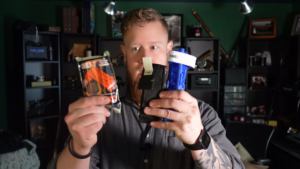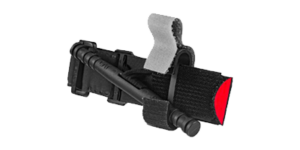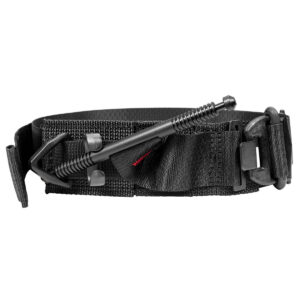Leg Tourniquets Are Different Than Arm Tourniquets…

Self-application of a tourniquet isn’t new to the internet. There are plenty of articles and videos on YouTube showing how to apply a CAT to an arm and demonstrating how fast and easily it can be done.
It gets harder of course if you’re pumping blood into the grass, but applying a TQ to the upper extremities has been well addressed.
What you don’t see nearly as often is anyone addressing the differences when applying a tourniquet to the legs. While you can certainly bleed out from an arm wound, you will expire more quickly from an uncontrolled femoral bleed, so it’s important to prioritize leg tourniquets first.
In this article we’ll explore how to correctly apply a tourniquet to the legs, and a few things you’ll need to consider to be effective.
Don’t bother with staging your TQ with the loop sized to your leg.
Trauma to your leg bad enough to require a TQ to control bleeding means the possibility of a fracture is high. Attempting to loop the TQ around a busted leg is going to be very difficult, and painful.
For self-application of a TQ to the leg, remember that you can disconnect it and use the dead space behind the knee to get the strap under the leg where you can secure it.
Don’t forget to check the pockets!
People carry things in pockets and if you’re like me, you carry a lot of things. When applying a TQ to the leg, make sure there isn’t anything in the pockets that might get trapped between the TQ and the leg.
Anything that obstructs the TQ strap is likely to reduce the effectiveness, so if you haven’t already cut the pants off, give the pockets a quick pat down.

You might need 2 Tourniquets
Tourniquets work by using circumferential pressure to clamp off the artery against the bone of the arm or leg. If the leg has a lot of tissue, from fat or muscle, between the TQ and the artery, it might be difficult to get the tourniquet tight enough.
This means, if you or the casualty you’re working on have big legs, you may need 2 tourniquets to stop bleeding. If you apply a tourniquet, you’re certain it’s been applied correctly, and bleeding still hasn’t stopped, correct procedure is to immediately apply a 2nd TQ directly above the first.
This additional TQ should apply enough pressure to control bleeding.
If your casualty is male, watch out for his Junk
It’s not uncommon for a set of testicles to get trapped in a “high and tight” leg tourniquet. I’ve seen it a few times and it’s unfortunate. The casualty will usually let you know right away if they’re conscious but try to be on the lookout when you’re applying the TQ.
Use the “Medic Kneel” to apply pressure points while getting out your TQs.
This technique is great for reducing the flow of blood while you get out your tourniquet. This helps to increase the amount of time you have by reducing blood loss as soon as possible. Your casualty might not like this much, but it seems to work well in my experience and the theory makes sense.



Outstanding reporting with superb advice on appropriate solutions for anyone, not only those directly responsible to protect and serve. Look forward to seeing more of such videos.